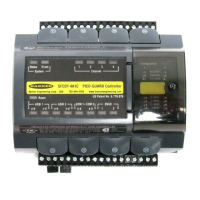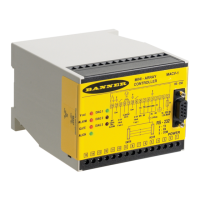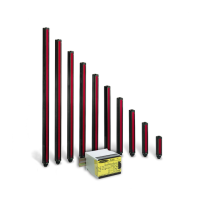8.3 Register Flow and Configuration
The DXM700 register data flow goes through the Local Registers, which are data storage elements that reside within the
processor. Using the DXM Configuration Software, the controller can be programmed to move register data from the Local
Register pool to remote devices, the internal radio, the I/O base (if applicable), or the display.
Figure 38. Register flow
Remote Devices
Ethernet/USB/Cellular
Processor
Local
Registers
Display I/O Base
Internal
Radio
8.3.1 Basic Approach to Configuration
When programming an application in the DXM700, first plan the overall data structure of the Local Registers. The Local
Registers are the main storage elements in the DXM700. Everything goes into or out of the Local Registers.
1. In the DXM Configuration Software, name the Local Registers to provide the beginning structure of the application.
2. Configure the read/write rules to move the data. The Read/Write rules are simple rules that move data between
devices (Nodes, Modbus slaves, sensors, etc) and the Local Registers.
3. Most applications require the ability to manipulate the Local Register data, not just move data around. Use the Action
rules to make decisions or transform the data after the data is in the Local Registers. Action rules can apply many
different functions to the Local Register data, including conditional statements, math operations, copy operations, or
trending.
4. To perform scheduled events in Local Registers, go to the Scheduler screen in the DXM Configuration Software.
These rules provide the ability to create register events by days of the week. The scheduler can also create events
based on sunrise or sunset.
8.3.2 Troubleshooting a
Configuration
View Local Registers using the Local Registers > Local Registers in Use screen of the DXM Configuration Software.
When a configuration is running on the DXM700, viewing the Local Registers can help you to understand the application's
operation. This utility can also access data from remote devices.
To configure the Local Register data to display on the LCD menu, go to the Local Registers screen, set the LCD
permissions to read or read/write.
8.3.3 Saving and Loading
Configuration Files
The DXM Configuration Software saves its configuration information in a XML file. Use the File menu to Save or Load
configuration files.
Save the configuration file before attempting to upload the configuration to the DXM700. The DXM Configuration Software
uploads the configuration file saved on the PC to the DXM700; it will not send the configuration loaded in the tool.
Sure Cross
®
DXM700-Bx Wireless Controller
50 www.bannerengineering.com - Tel: + 1 888 373 6767
